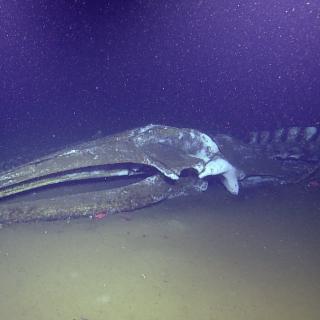High School Students Launch Research Drifters from Nautilus

Over the course of the past month, students in the Honors Research Program (HRP) have designed, constructed, and tested four ocean drifters. These drifters are being deployed from E/V Nautilus during the California Borderlands expedition. The students are divided into two groups, boys and girls. The boys are deploying two drifters during the second leg of the voyage; the girls are deploying theirs shortly after. The students hope their drifters will last at least six months, but the GPS unit mounted on each drifter may operate for a full year. Ultimately, the drifters will produce data that can be used to evaluate and improve mathematical models of ocean currents. These models, like the example pictured below, aid in weather prediction, fisheries management, and even disaster cleanup.

The Student Drifters Program was established over ten years ago by NOAA scientists in Woods Hole, Massachusetts. The goal of the program is to build hand-made, low-cost drifters that can track ocean currents using a satellite GPS. Although the HRP students based their designs off those provided by the program here, they were also encouraged to modify that design to improve performance and usability and to select the materials they believed would best withstand ocean conditions. Each group of students developed its own unique modifications with the help of NOAA’s James Manning, though all designs remained consistent with oceanographic standards.
The students built two different kinds of drifters. The first, a surface drifter, tracks wind-driven surface currents. It consists of a mast (frame), spars, a floatation system, and four underwater sails that are swept by the currents. The second, a drogue drifter, will measure sub-surface currents. The basic parts of the drogue include two pop-up leaf bags, a 50-foot braided wire cable, a buoy flotation system that rests at the surface, and various forms of hardware that connect all other parts. Each drifter is equipped with its own GPS system, which will be held afloat at the surface and send its exact location via satellite every six hours. These “pings” will be publically accessible here.
Each drifter is identified by its GPS unit’s unique ESN code. This ESN code is used to differentiate between surface and drogue drifters. The two surface drifters ESNs are 368741 and 990469. The two drogues are 995513 and 730031.

California Borderlands: Our Unknown Backyard
This cruise will explore the ocean floor in previously unstudied portions of the California Borderlands, offshore from some of the most tectonically active (as well as densely populated) areas of California, using a combination of high resolution multibeam mapping, sonar surveys and targeted ROV dives.



